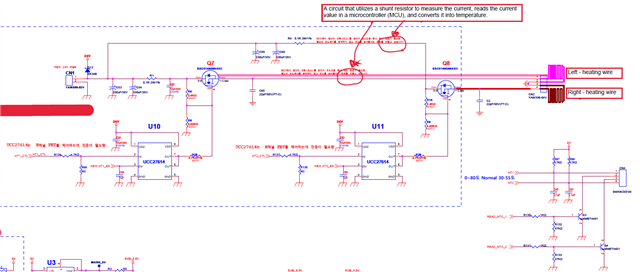Hi, TI expert
The customer is currently developing a temperature controller for use with the heating mat.
The customer is currently using a method of linear temperature detection by employing NTC thermistors for temperature measurement.
However, the customer wants to configure a circuit that deviates from the conventional NTC thermistor usage. They aim to use a shunt resistor to measure the current, read it in the MCU, and convert it into temperature values.
In the schematic below, I would like to apply the circuit between the FET and the heating-wire.


Is there any recommended solution you could suggest for this?
If there are any recommendations for components such as current sense or others, as well as reference circuits, that would be appreciated.
Please check. Thank you.

